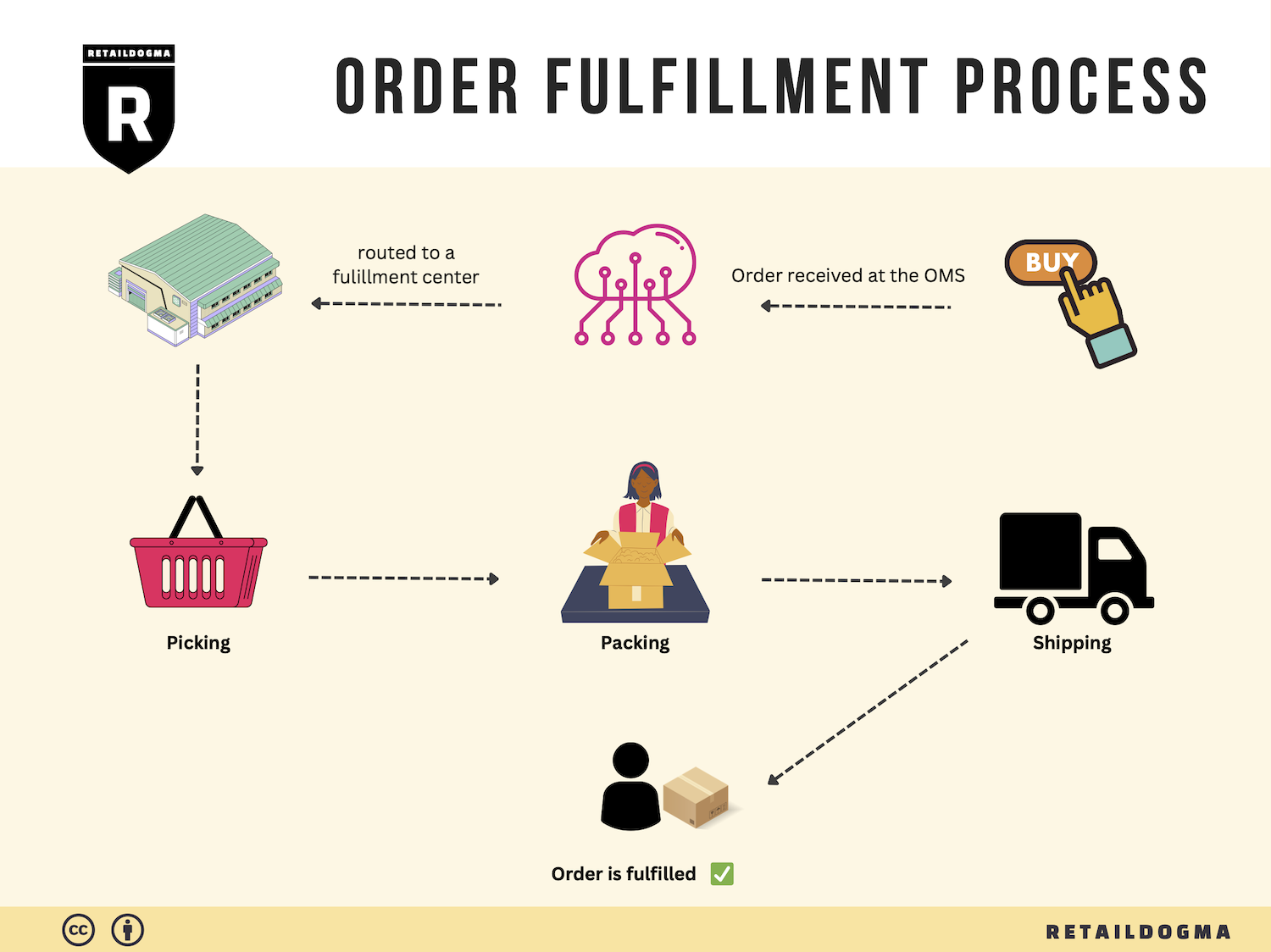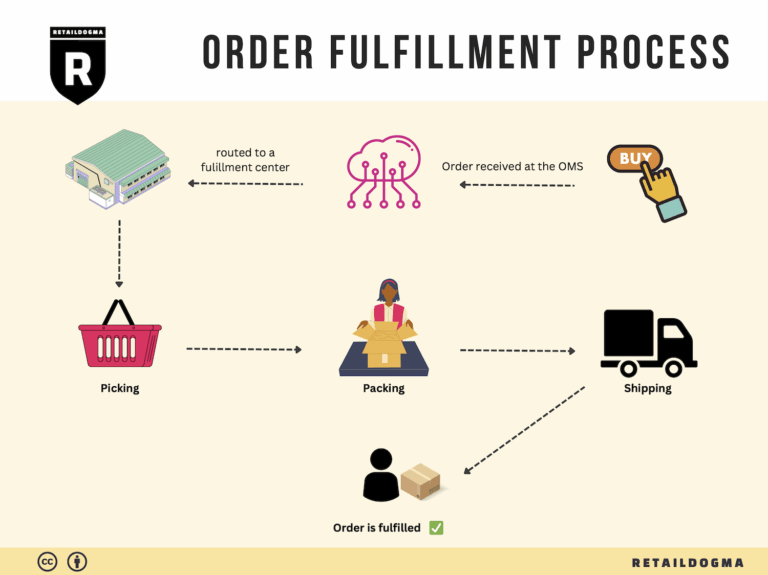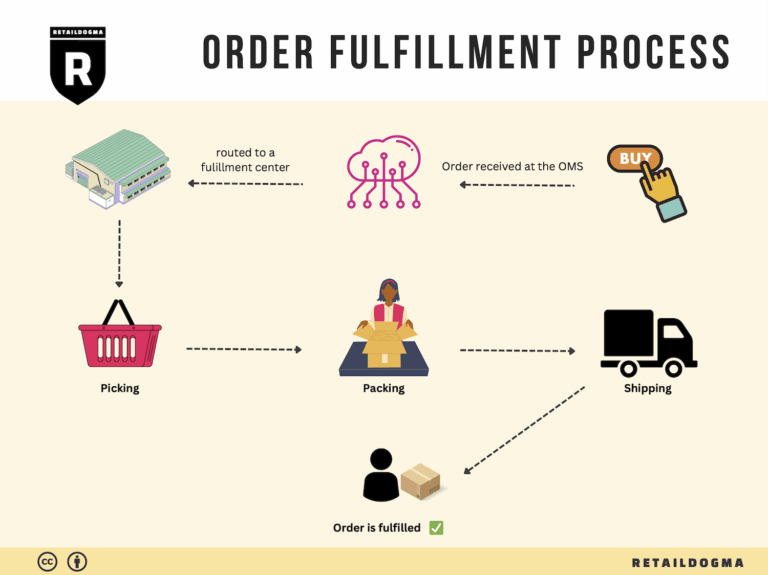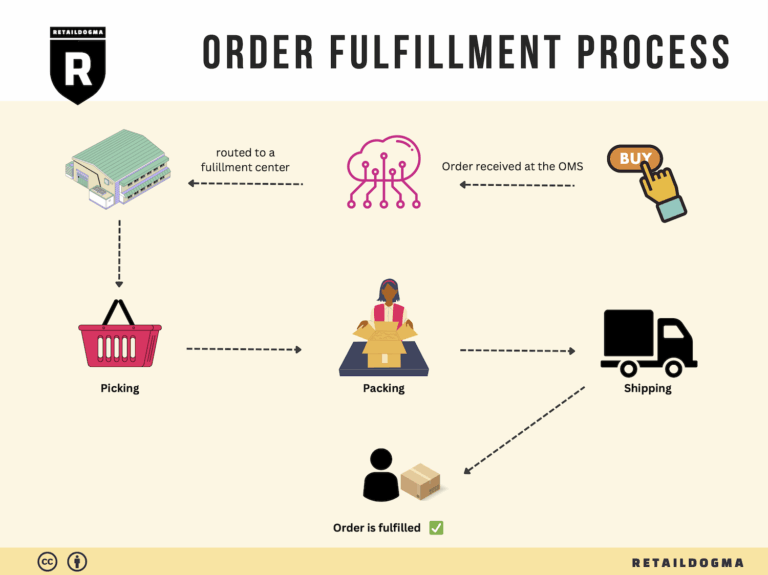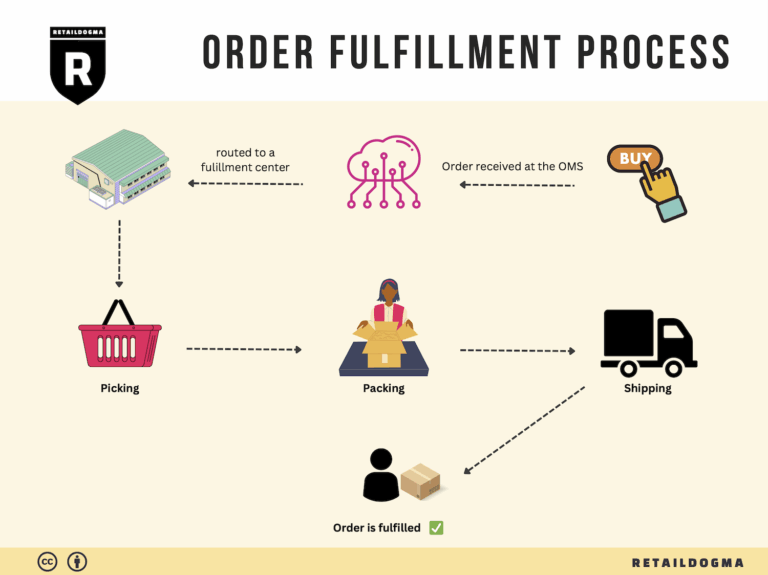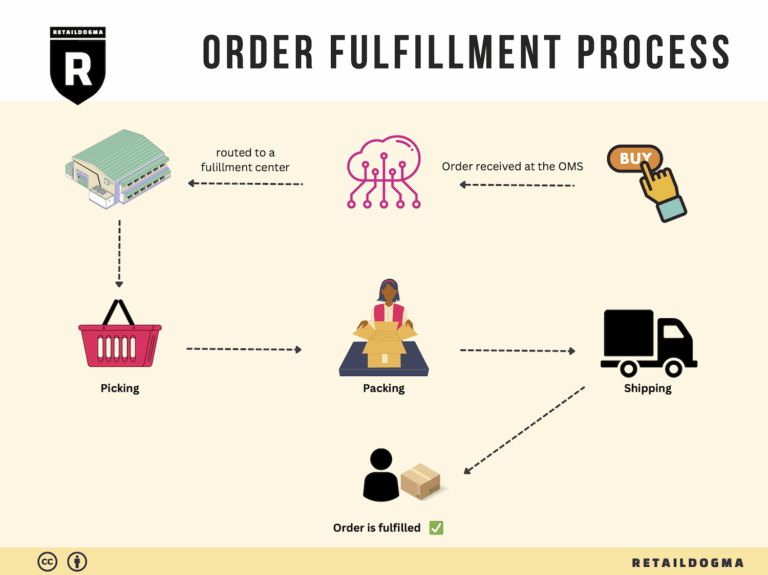How Order Fulfillment Works: A Step-by-Step Guide for Businesses
What is E-commerce Fulfillment? An Introduction for Growing Businesses
Understanding E-commerce Fulfillment: A Crucial Step for Growing Businesses
As an e-commerce business owner, you may find yourself overwhelmed with the demands of packing and shipping orders. It’s a common pain point that can detract from your core focus: growing your business. Fulfillment, in its simplest form, is the process of getting a product from your warehouse to your customer’s doorstep. While it sounds straightforward, the complexities of logistics can quickly pile up, especially as your sales volume increases.
This guide aims to demystify e-commerce fulfillment, offering practical insights tailored for businesses ready to scale. We will explore various fulfillment models, including Third-Party Logistics (3PL) and Fulfillment by Amazon (FBA), to help you understand which approach aligns best with your operational needs. Each model has its own set of advantages and disadvantages, so it’s essential to choose wisely based on your unique business requirements.
We’ll also delve into the core services offered by fulfillment centers, such as inventory management, order picking, packing, shipping, and returns processing. Understanding these services will allow you to appreciate the full spectrum of what a fulfillment partner can provide, ensuring that you deliver a seamless experience to your customers.
Choosing the right fulfillment partner is a critical decision that can significantly impact your business’s efficiency and customer satisfaction. We will outline key factors to consider, including location, technology integration, turnaround times, and pricing structures. This knowledge will empower you to make informed choices that will enhance your logistics operations without breaking the bank.
Additionally, we will discuss the pricing models associated with different fulfillment options, enabling you to evaluate costs in relation to the value provided. By understanding how pricing works, you can better assess which fulfillment strategy will yield the best return on investment for your growing business.
Ultimately, this guide is designed to empower you with the information needed to make smart decisions about your logistics. By optimizing your fulfillment process, you can focus on what truly matters: growing your sales and delighting your customers. Whether you are just starting or looking to refine your existing operations, the insights provided here will serve as a valuable resource on your journey to e-commerce success.
What You’ll Learn In This Guide
- What is E-commerce Fulfillment? An Introduction for Growing Businesses
- The Order Fulfillment Process: From ‘Buy’ Button to Customer’s Door
- Comparing Fulfillment Models: In-House vs. 3PL vs. Dropshipping
- A Deep Dive into Amazon FBA: Pros, Cons, and Who It’s For
- Core Services Offered by Fulfillment Centers
- How to Choose a Fulfillment Partner: A 6-Point Checklist
- Understanding Fulfillment Pricing: A Breakdown of Common Fees
- Frequently Asked Questions (FAQs) about Fulfillment
- Conclusion: Is Outsourcing Fulfillment the Right Move for Your Business?
- Important Disclaimer
The Order Fulfillment Process: From ‘Buy’ Button to Customer’s Door
1. Receiving Inventory
The order fulfillment process begins with receiving inventory at the warehouse. This step involves the intake of products from suppliers or manufacturers, which are then verified against purchase orders to ensure accuracy. The key term associated with this phase is SKU (Stock Keeping Unit). Each product is assigned a unique SKU, which helps in tracking inventory levels and managing stock efficiently.
Receiving is crucial because it sets the foundation for the entire fulfillment operation. Properly received inventory ensures that the warehouse has the correct quantities and types of products available for order processing. Any discrepancies during this step can lead to stockouts or excess inventory, ultimately affecting customer satisfaction and operational efficiency. Moreover, accurate inventory data at this stage aids in better forecasting and demand planning, essential for scaling your business.
2. Warehouse Storage
Once inventory is received and verified, it is stored in designated areas within the warehouse. This step involves organizing products in a way that maximizes space utilization and facilitates easy access. The key term here is bin location, which refers to the specific area where each SKU is stored.
Effective warehouse storage is vital for maintaining an organized inventory system, reducing the time it takes to locate products during the picking process. Properly structured storage not only enhances operational efficiency but also minimizes the risk of product damage. As e-commerce businesses scale, optimizing warehouse storage becomes increasingly important to accommodate growing inventory levels without compromising on speed or accuracy.
3. Order Picking
When a customer places an order, the next step in the fulfillment process is order picking. This involves gathering the specific items from their respective bin locations based on a pick list—a document that outlines the SKUs and quantities required for the order.
Order picking is critical because it directly impacts the speed and accuracy of order fulfillment. Efficient picking processes, such as batch picking or zone picking, can significantly reduce the time it takes to fulfill orders. In the competitive world of e-commerce, where customers expect fast delivery, optimizing this step can set your business apart from competitors. Additionally, using technology like handheld scanners or automated picking systems can further enhance accuracy and efficiency, ensuring that the right products reach customers promptly.
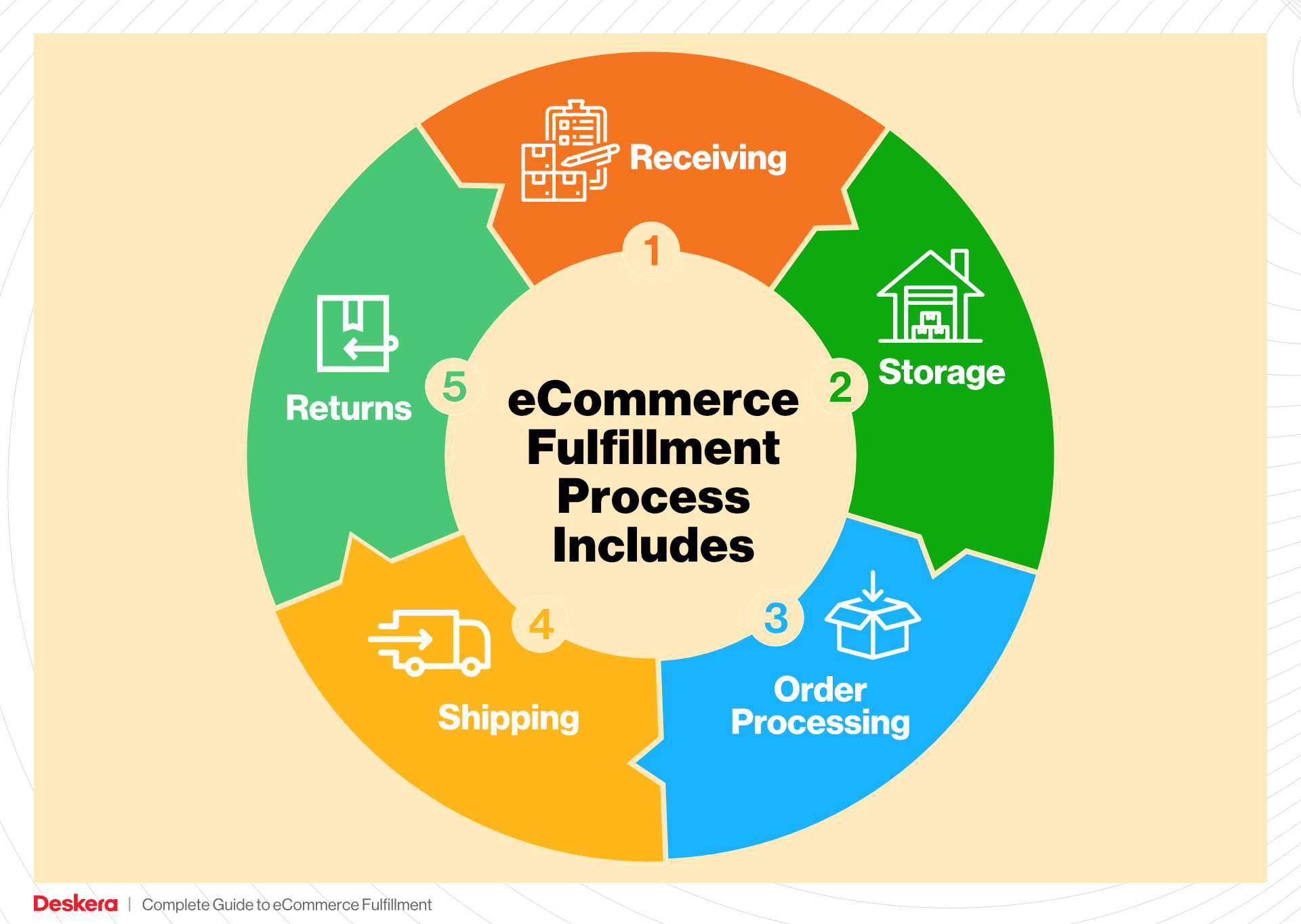
4. Order Packing
After items are picked, they are moved to the packing station, where they are carefully packed for shipment. This stage involves selecting appropriate packaging materials and ensuring that products are secured to prevent damage during transit. The key term to note here is packaging optimization—the practice of using the right size and type of packaging to minimize costs and environmental impact.
Packing is essential for delivering a positive customer experience. Well-packed orders not only reduce the likelihood of returns due to damage but also contribute to a professional brand image. Moreover, customized packaging options, such as branded boxes or eco-friendly materials, can enhance customer satisfaction and loyalty. As your business grows, investing in efficient packing solutions can streamline this process and improve overall fulfillment speed.
5. Shipping & Delivery
The final step in the order fulfillment process is shipping and delivery. Once an order is packed, it is handed off to a shipping carrier for delivery to the customer’s address. This step is characterized by the use of shipping labels, which include essential information such as the destination, tracking number, and carrier details.
Shipping and delivery are pivotal to the customer experience. Timely and accurate delivery can significantly influence customer satisfaction and retention. Choosing the right shipping partners and methods is critical for balancing cost and speed. For e-commerce businesses, particularly those operating through platforms like Amazon, meeting shipping deadlines is essential to maintain seller ratings and avoid penalties. As your business scales, leveraging multiple carriers and optimizing shipping routes can help reduce costs and improve delivery times, ultimately enhancing your competitive edge in the market.
By understanding and optimizing each step of the order fulfillment process, e-commerce businesses can enhance operational efficiency, reduce costs, and deliver exceptional customer experiences—key components for scaling success in the competitive landscape of online retail.
Comparing Fulfillment Models: In-House vs. 3PL vs. Dropshipping
Fulfillment Models Overview
When scaling an e-commerce business, selecting the right fulfillment model is crucial. Each model presents unique benefits and challenges, which can significantly impact operational efficiency, customer satisfaction, and overall profitability. Below is a comparative table that outlines the three main fulfillment models: In-House Fulfillment, Third-Party Logistics (3PL), and Dropshipping.
| Model | Who Handles Inventory | Best For (Business Stage) | Key Advantage | Key Disadvantage |
|---|---|---|---|---|
| In-House Fulfillment | The business itself | Established businesses | Complete control over inventory and processes | High overhead costs and resource demands |
| Third-Party Logistics (3PL) | External logistics provider | Growing businesses | Scalable, cost-effective, and efficient | Less control over inventory and processes |
| Dropshipping | Supplier or manufacturer | Startups and small businesses | Low upfront investment and risk | Lower profit margins and less control over fulfillment |
In-House Fulfillment
In-house fulfillment involves managing the entire order fulfillment process internally, from inventory management to picking, packing, and shipping. This model is typically best suited for established businesses that have sufficient resources and a stable customer base.
Key Advantages: One of the primary benefits of in-house fulfillment is the complete control it offers over inventory and processes. Businesses can tailor their fulfillment operations to meet specific customer needs, ensuring high levels of service quality. Additionally, having direct oversight can lead to more efficient handling of returns and inventory management.
Key Disadvantages: However, this model also comes with significant drawbacks, including high overhead costs related to warehousing, staffing, and logistics. Businesses must invest in infrastructure and technology, which can strain financial resources, especially for those looking to scale rapidly. Moreover, the operational complexity can divert focus from core business activities, leading to potential inefficiencies.
Third-Party Logistics (3PL)
Third-party logistics (3PL) involves outsourcing fulfillment tasks to a specialized provider. This model is particularly advantageous for growing businesses that require flexibility and scalability in their logistics operations without the burden of managing the entire process internally.
Key Advantages: The primary advantage of using a 3PL is the scalability it offers. Businesses can easily adjust their logistics capabilities in response to fluctuating demand without significant investment in infrastructure. A 3PL provider typically has established relationships with carriers, allowing businesses to benefit from lower shipping rates and improved delivery times. Additionally, 3PLs often provide advanced technology solutions for inventory management and data analytics, enhancing operational efficiency.
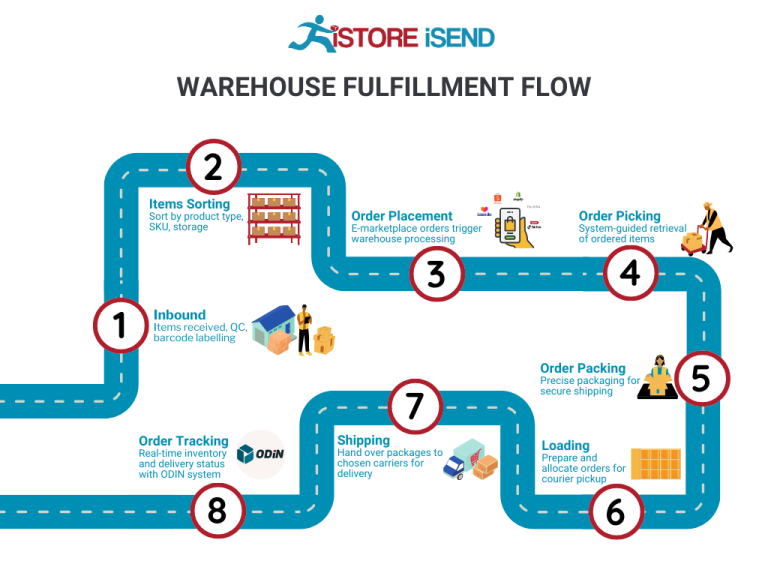
Key Disadvantages: On the downside, relying on a 3PL means relinquishing some control over inventory and fulfillment processes. This lack of oversight can lead to challenges in maintaining quality standards and managing customer expectations. Furthermore, businesses may face potential communication issues and delays if the 3PL provider does not align with their operational goals.
Dropshipping
Dropshipping is a fulfillment model where the retailer sells products without holding inventory. Instead, when a customer makes a purchase, the retailer forwards the order details to the supplier, who then ships the product directly to the customer. This model is ideal for startups and small businesses looking to enter the e-commerce space with minimal upfront investment.
Key Advantages: The most significant advantage of dropshipping is the low barrier to entry. Retailers do not need to invest in inventory upfront, reducing financial risk. This model allows for a wide variety of products to be offered without the need for warehousing, making it easier to test new markets and products. Additionally, dropshipping can free up time and resources for business owners, allowing them to focus on marketing and customer engagement.
Key Disadvantages: However, dropshipping also comes with considerable challenges. Profit margins are typically lower since retailers purchase products at a wholesale price and sell them at retail. There is also a lack of control over inventory levels and shipping times, which can lead to customer dissatisfaction if suppliers fail to meet delivery expectations. Moreover, businesses may face difficulties with returns and quality assurance, as they rely entirely on their suppliers for product fulfillment.
Conclusion
Choosing the right fulfillment model is a critical decision that can significantly impact an e-commerce business’s success. In-house fulfillment offers control but at a higher cost, while 3PL provides scalability and efficiency, making it suitable for growing businesses. Dropshipping allows for low-risk entry into the market but comes with challenges related to profit margins and control. Each model has its merits and drawbacks, and the best choice will depend on the specific needs, resources, and growth ambitions of the business.
A Deep Dive into Amazon FBA: Pros, Cons, and Who It’s For
Understanding Fulfillment by Amazon (FBA)
Fulfillment by Amazon (FBA) is a service offered by Amazon that enables e-commerce sellers to store their products in Amazon’s fulfillment centers. Amazon takes care of storage, packaging, shipping, and customer service on behalf of the sellers. This allows entrepreneurs to focus on growing their businesses while leveraging Amazon’s vast logistics network.
How FBA Works
-
Product Listing: Sellers create listings for their products on Amazon. They can choose to enroll in FBA, which allows them to offer Prime shipping and other benefits.
-
Shipping Inventory: Sellers ship their inventory to Amazon’s fulfillment centers. Amazon will provide guidelines on how to package and label items to ensure compliance with their requirements.
-
Storage: Once received, Amazon stores the products in their warehouses. Sellers can track their inventory levels through the Amazon Seller Central dashboard.
-
Order Fulfillment: When a customer places an order, Amazon picks, packs, and ships the product directly to the customer. They handle all aspects of shipping, including tracking and delivery notifications.
-
Customer Service and Returns: Amazon also manages customer service inquiries and returns for FBA orders, providing a seamless experience for buyers.
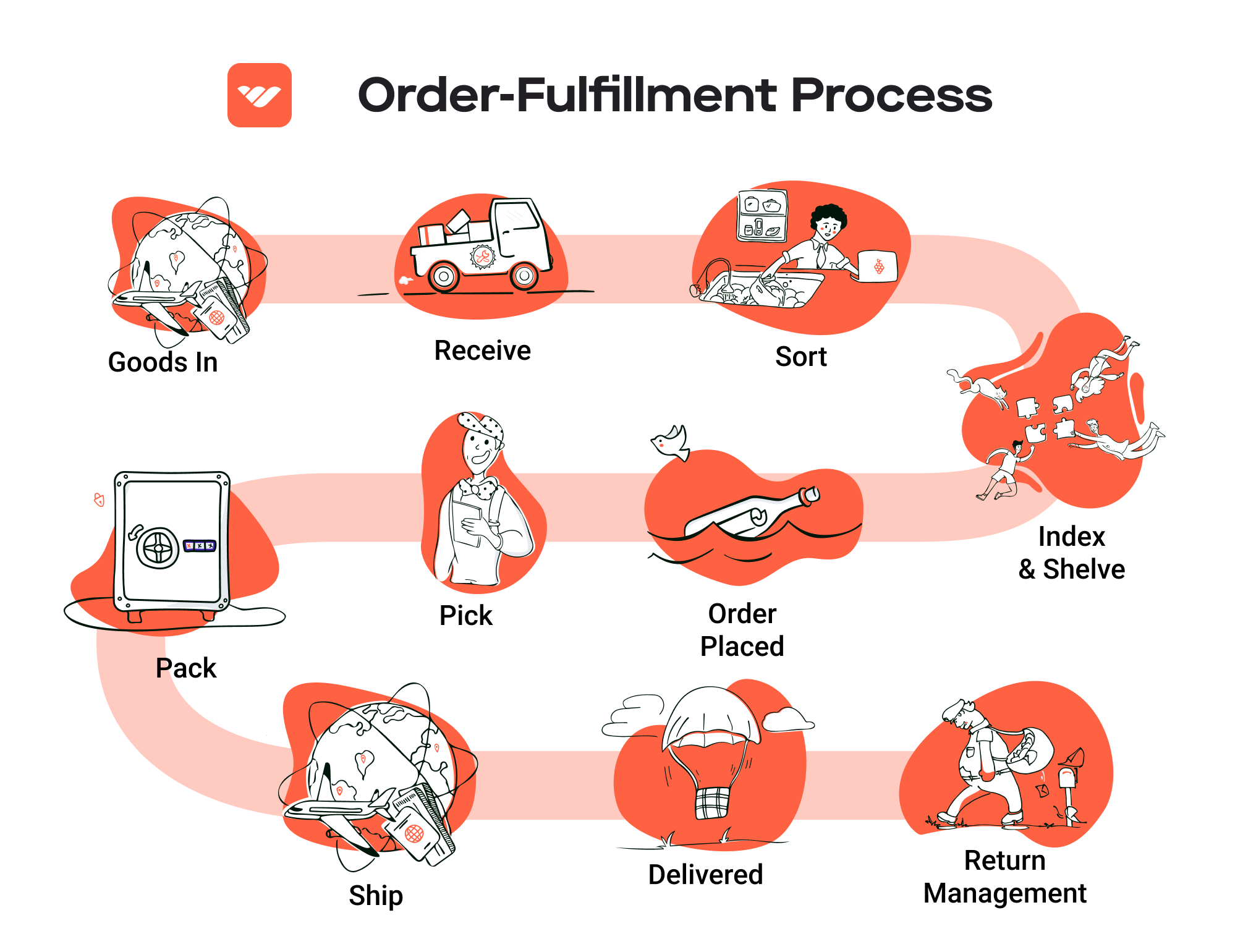
Pros of Using FBA
-
Prime Eligibility: Products fulfilled through FBA are eligible for Amazon Prime, which can significantly increase sales. Prime members often prefer items that qualify for free two-day shipping, enhancing your product visibility and competitiveness.
-
Customer Trust: By utilizing FBA, sellers benefit from Amazon’s trusted brand and customer service. This trust can lead to higher conversion rates, as customers feel more secure purchasing items fulfilled by Amazon.
-
Multi-Channel Fulfillment: FBA allows sellers to fulfill orders from various sales channels, not just Amazon. This means that products sold on eBay, Shopify, or other platforms can also be fulfilled through Amazon’s logistics, simplifying inventory management.
-
Scalability: FBA provides a scalable solution for growing businesses. As demand increases, sellers can easily send more inventory to Amazon without needing to invest in their own warehousing or logistics capabilities.
-
Time Savings: By outsourcing fulfillment, sellers can save time and focus on other critical aspects of their business, such as marketing and product development.
Cons of Using FBA
-
High Fees: FBA comes with various fees, including storage fees and fulfillment fees. These can add up, especially if products are not sold quickly. Sellers need to carefully calculate these costs to ensure profitability.
-
Strict Inventory Rules: Amazon has strict policies regarding inventory management, including restrictions on certain products and requirements for packaging and labeling. Non-compliance can lead to additional fees or even account suspension.
-
Commingling Risks: With FBA, sellers’ inventory can be commingled with that of other sellers. This means that if a customer receives a damaged or defective item from another seller, it can negatively impact your seller rating. While Amazon has systems in place to handle issues, the risk still exists.
-
Limited Control: By using FBA, sellers relinquish some control over their inventory and shipping processes. Amazon’s systems dictate how products are stored, packed, and shipped, which may not always align with a seller’s preferences.
-
Longer Shipping Times for Returns: While Amazon handles returns, the process may not always be as quick for sellers who want to restock returned items. This can impact inventory levels and cash flow.
Who is FBA Best For?
Fulfillment by Amazon is particularly beneficial for:
-
Small to Medium-Sized E-commerce Sellers: Businesses that may not have the resources to manage their own fulfillment operations can take advantage of FBA’s infrastructure and expertise.
-
Sellers with High Sales Volume: Those who can predict high sales volume or seasonal spikes will find FBA’s scalability advantageous, allowing them to meet customer demands without logistical headaches.
-
Brands Looking to Build Trust: Newer brands or those entering competitive markets may benefit from the credibility that comes with Amazon’s fulfillment, especially if they are selling consumer goods.
-
Multi-Channel Sellers: Businesses that sell on multiple platforms can streamline their logistics and improve customer satisfaction through FBA’s multi-channel fulfillment capabilities.
-
Entrepreneurs Focused on Growth: Sellers who want to focus on scaling their business rather than managing logistics will find FBA’s services invaluable, allowing them to allocate resources towards marketing and product development.
In conclusion, Fulfillment by Amazon offers a powerful solution for e-commerce businesses looking to enhance their logistics and scale operations. While there are notable pros and cons to consider, the benefits of leveraging Amazon’s infrastructure, customer trust, and Prime eligibility can provide a significant competitive edge in the fast-paced world of online retail.
Core Services Offered by Fulfillment Centers
Inventory Management & Warehousing
Inventory management and warehousing are foundational services provided by fulfillment centers that significantly impact the efficiency of e-commerce operations. This service entails the systematic tracking of stock levels, orders, sales, and deliveries, ensuring that businesses maintain optimal inventory levels without overstocking or stockouts.
Benefits:
1. Real-Time Visibility: Advanced inventory management systems offer e-commerce businesses real-time visibility into stock levels. This capability allows businesses to make informed decisions regarding reordering and stock allocation, ultimately preventing lost sales due to stockouts.
-
Cost Efficiency: By outsourcing warehousing to a fulfillment center, businesses can save on the costs associated with maintaining their own facilities. Fulfillment centers often have established relationships with shipping carriers, which can lead to reduced shipping costs.
-
Scalability: As your business grows, the demands on your inventory management will increase. Fulfillment centers provide scalable solutions that can easily adapt to fluctuations in demand, such as seasonal spikes or promotional campaigns, without the need for businesses to invest in additional resources.
Pick and Pack Services
The pick and pack service is a crucial component of the order fulfillment process, where fulfillment centers efficiently gather products from inventory and prepare them for shipment. This process typically involves picking the right items from the warehouse, packing them securely, and preparing them for delivery.
Benefits:
1. Speed and Accuracy: With streamlined pick and pack processes, fulfillment centers can significantly reduce order processing times. This speed is essential for e-commerce businesses that promise fast delivery to their customers, enhancing overall customer satisfaction.
-
Quality Control: Fulfillment centers implement rigorous quality control measures during the pick and pack process to ensure that the correct items are shipped. This reduces the likelihood of returns due to incorrect orders, thereby improving customer trust and loyalty.
-
Custom Packaging Options: Many fulfillment centers offer tailored packaging solutions to enhance brand presentation. Custom packaging can include branded materials, promotional inserts, and gift wrapping, which not only enhances the unboxing experience but also strengthens brand identity.
Kitting and Assembly
Kitting and assembly services involve combining multiple products into a single package or kit, which is often necessary for promotional bundles, subscription boxes, or special offers. This service can also include product assembly for items that require construction before shipping.
Benefits:
1. Enhanced Product Offerings: By utilizing kitting and assembly services, e-commerce businesses can create unique product offerings that differentiate them from competitors. This can lead to increased sales and customer interest in bundled products.
-
Time Savings: Outsourcing kitting and assembly allows businesses to focus on core competencies such as marketing and customer engagement rather than spending time on labor-intensive tasks. This efficiency can lead to faster product launches and more responsive service.
-
Improved Inventory Management: Kitting can simplify inventory management by reducing the number of individual SKUs that need to be tracked. This can lead to more efficient stock control and less complexity in order processing.
Returns Management (Reverse Logistics)
Returns management, often referred to as reverse logistics, is the process of handling returns efficiently and effectively. This service is critical in e-commerce, where return rates can be significant, particularly in categories such as apparel and electronics.
Benefits:
1. Streamlined Returns Process: Fulfillment centers implement structured returns processes that ensure items are inspected, restocked, or disposed of as necessary. This organization minimizes delays and enhances customer satisfaction by facilitating quick returns.
-
Data Insights: A well-managed returns process provides valuable data insights into customer behavior, product performance, and potential quality issues. E-commerce businesses can leverage this information to improve product offerings and reduce return rates.
-
Customer Retention: A hassle-free returns experience can significantly influence customer loyalty. When customers know they can return items easily, they are more likely to make purchases, even if they are unsure about the fit or functionality of a product.
Conclusion
In summary, partnering with a fulfillment center offers e-commerce businesses a range of core services that streamline operations, enhance customer satisfaction, and ultimately drive growth. From inventory management and pick and pack services to kitting and returns management, these fulfillment solutions are essential for scaling your business efficiently in a competitive market. By leveraging these services, businesses can focus on their strategic goals while ensuring that their logistics and fulfillment processes are in expert hands.
How to Choose a Fulfillment Partner: A 6-Point Checklist
Location & Warehouse Network
Importance:
The location of your fulfillment partner’s warehouse can significantly impact shipping costs and delivery speed. A strategically located warehouse near your customer base can reduce transit times and lower shipping fees, which is crucial for maintaining customer satisfaction and profitability.
Questions to Ask:
– Where are your warehouses located, and how does that align with my target market?
– Can you provide shipping zone maps or delivery time estimates for my key markets?
– How does your location impact shipping costs compared to other regions?
Technology & Integrations
Importance:
In today’s e-commerce landscape, real-time data visibility and technology integration are critical for seamless operations. A fulfillment partner should provide a robust technology platform that integrates easily with your e-commerce systems, allowing for accurate inventory tracking, order management, and reporting.
Questions to Ask:
– What technology do you use for order processing and inventory management?
– Can your system integrate with my e-commerce platform (e.g., Shopify, WooCommerce, Amazon)?
– Do you offer real-time inventory visibility and reporting features? Can I access this data through a dashboard?
Specializations (e.g., cold storage, oversized items)
Importance:
Depending on your product range, you may require specialized fulfillment services, such as cold storage for perishables, handling oversized items, or custom packaging options. Choosing a partner that can cater to your specific needs is vital for efficient operations and customer satisfaction.
Questions to Ask:
– Do you have experience handling products similar to mine (e.g., perishable goods, fragile items)?
– What specialized services do you offer (e.g., kitting, bundling, custom packaging)?
– Can you accommodate seasonal spikes in demand for specialized items?
Scalability & Capacity
Importance:
As your business grows, your fulfillment needs will evolve. A partner that can scale with your business is essential to avoid service disruptions during peak seasons. Ensuring that your fulfillment partner has the capacity to handle increased order volumes without compromising service quality is crucial.
Questions to Ask:
– What is your current capacity, and how do you handle seasonal fluctuations in order volume?
– How quickly can you scale operations if my order volume increases unexpectedly?
– Can you provide examples of how you’ve managed growth for other clients?
Pricing and Contracts
Importance:
Understanding pricing structures and contract terms is essential to ensure that you’re not only getting a fair deal but also that there are no hidden fees that could impact your bottom line. Transparent pricing can help you budget effectively and avoid unexpected costs.
Questions to Ask:
– Can you provide a detailed breakdown of your pricing structure, including storage, picking, packing, and shipping fees?
– Are there any hidden fees (e.g., for receiving, returns, or long-term storage)?
– What are the terms of your contracts? Are there minimum volume commitments or penalties for early termination?
Customer Support & Reviews
Importance:
Reliable customer support can be a game-changer in e-commerce fulfillment. Issues will arise, and having a responsive partner can help mitigate problems quickly. Additionally, checking reviews and testimonials can provide insights into their reliability and service quality.
Questions to Ask:
– What levels of customer support do you offer (e.g., dedicated account manager, 24/7 support)?
– Can you share customer testimonials or case studies that highlight your service quality?
– How do you handle issues like delays or order inaccuracies, and what is your process for resolving them?
Conclusion
Choosing the right fulfillment partner is a critical decision that can significantly impact your e-commerce business’s efficiency, customer satisfaction, and bottom line. By using this checklist, you can evaluate potential partners more effectively and make an informed choice that aligns with your business goals. Remember, a solid partnership with a 3PL provider can free up your resources and allow you to focus on scaling your business while ensuring that your fulfillment operations run smoothly.
Understanding Fulfillment Pricing: A Breakdown of Common Fees
Initial Setup Fees
Initial setup fees are typically charged when you first engage with a fulfillment center. This fee can cover a range of services, including account setup, integration with your e-commerce platform, and initial training on how to use the fulfillment center’s systems. The cost may vary depending on the complexity of your business needs and the fulfillment provider’s technology.
In many cases, setup fees are a one-time expense, but it’s essential to clarify what services are included. For example, some providers may charge extra for custom software integration or advanced training sessions. To mitigate these costs, ask for a detailed breakdown of the setup process and any optional services that could incur additional fees.
Receiving Fees
Receiving fees are incurred when your inventory arrives at the fulfillment center. This fee covers the labor and resources needed to unload, inspect, and store your products. Receiving fees are usually calculated based on the volume of goods received, often charged per pallet or per unit.
It’s important to understand the receiving process thoroughly. Some fulfillment centers may charge extra for complex items requiring special handling or inspection. Additionally, if your products come in bulk, ensure you know how the receiving fees scale with larger shipments. Clarify if there are any minimum charges, as these can impact your overall costs.
Storage Fees (per pallet/bin)
Storage fees are charged for keeping your inventory in the fulfillment center. These fees can be calculated on a per-pallet or per-bin basis, and they typically apply monthly. The cost may vary depending on the size and weight of your products, as well as the duration of storage.
Understanding how storage fees are structured is critical for effective inventory management. Some fulfillment centers may offer tiered pricing based on the volume of goods stored, while others may have flat rates. It’s also wise to inquire about any additional fees for long-term storage, as holding inventory for extended periods can lead to higher costs.
Pick & Pack Fees (per item/order)
Pick and pack fees are charged for the labor involved in selecting items from the warehouse and preparing them for shipping. This fee is typically calculated on a per-item or per-order basis. The complexity of the order can affect the pricing; for example, orders with multiple items may incur higher fees due to the increased labor involved.
When evaluating pick and pack fees, consider the efficiency of the fulfillment center’s processes. Some providers offer discounts for bulk orders or for businesses that consistently ship high volumes. Additionally, inquire about any additional charges for special packaging requests or custom kitting services, as these can add to your overall fulfillment costs.
Shipping Fees
Shipping fees cover the cost of transporting your products from the fulfillment center to the customer. These fees can vary widely based on factors such as the shipping carrier, destination, package dimensions, and weight. Many fulfillment centers have established relationships with carriers, allowing them to negotiate better rates that can be passed on to you.
To accurately assess shipping fees, consider the following aspects:
- Shipping Zones: Understand how shipping zones can affect costs. Shipping to a nearby state will typically be cheaper than shipping across the country.
- Shipping Methods: Evaluate the options available (standard, expedited, same-day) and their associated costs.
- Volume Discounts: If you anticipate high shipping volumes, discuss potential discounts with your fulfillment provider.
Tips for Getting an Accurate Quote
To obtain an accurate quote for fulfillment services, follow these guidelines:
-
Request a Detailed Pricing Breakdown: Ensure you receive a comprehensive list of all potential fees, including those that may not be immediately obvious, like long-term storage or special handling charges.
-
Understand Your Needs: Clearly communicate your business model, expected order volumes, and any special requirements to the fulfillment provider. This information helps them tailor a quote that reflects your specific needs.
-
Compare Multiple Providers: Don’t settle for the first quote you receive. Comparing multiple fulfillment centers can give you a better idea of the market rate and help you identify the best fit for your business.
-
Ask About Hidden Fees: Be proactive in asking about any fees that may not be included in the initial quote, such as returns processing or additional packaging costs.
-
Negotiate Terms: Many fulfillment providers are open to negotiation, especially if you’re committing to a longer-term contract. Discuss potential discounts for higher volumes or bundled services.
By understanding the various fee structures and taking the time to gather accurate quotes, you can make informed decisions that align with your business goals and help you scale effectively.
Frequently Asked Questions (FAQs) about Fulfillment
1. What is an Amazon Fulfillment Center in Houston?
An Amazon Fulfillment Center in Houston is a specialized warehouse facility where Amazon stores products and manages the logistics of order fulfillment. This includes picking, packing, and shipping products directly to customers. By utilizing a fulfillment center, e-commerce businesses can streamline their operations and improve delivery times.
2. What is the difference between a warehouse and a fulfillment center?
A warehouse is primarily used for storage of goods, while a fulfillment center is focused on order processing and distribution. Fulfillment centers handle the entire process from receiving inventory to picking, packing, and shipping orders, often incorporating technology for real-time inventory management and analytics.
3. What is a 3PL?
A 3PL, or third-party logistics provider, is a company that manages logistics and supply chain operations for other businesses. This includes warehousing, transportation, and fulfillment services. Partnering with a 3PL allows businesses to focus on their core operations while leveraging the expertise and infrastructure of the 3PL for logistics efficiency.
4. How much do fulfillment services cost?
The cost of fulfillment services can vary widely based on factors such as the volume of orders, the complexity of the products, and additional services like custom packaging or assembly. Typically, businesses can expect to pay for storage fees, order processing fees, and shipping costs. It’s crucial to obtain detailed quotes from fulfillment providers to understand the pricing structure fully.
5. How can I benefit from using an Amazon Fulfillment Center in Houston?
Utilizing an Amazon Fulfillment Center in Houston offers several advantages, including reduced shipping costs due to the central location, faster delivery times to a broad customer base, and access to advanced logistics technology. Additionally, partnering with a fulfillment center can lower overhead costs by eliminating the need for in-house warehousing.
6. What types of businesses can use the Houston fulfillment center?
Any e-commerce business can benefit from using a fulfillment center in Houston, including those selling home goods, fashion, electronics, and more. The center is designed to accommodate various product types and fulfill orders for businesses of all sizes, from startups to established brands.
7. How does the fulfillment process work?
The fulfillment process typically involves three key steps:
– Pick: Once an order is received, the fulfillment center staff retrieves the ordered items from storage.
– Pack: The items are then carefully packed using appropriate materials to ensure safe delivery.
– Ship: Finally, the packaged orders are shipped out using established carrier partnerships to deliver to customers efficiently.
8. What should I look for in a fulfillment partner?
When choosing a fulfillment partner, consider factors such as:
– Experience with Amazon FBA and FBM requirements
– Turnaround time for order processing
– Real-time inventory visibility and integration with your e-commerce platform
– Return management capabilities
– Custom packaging options and flexibility in services offered
9. How does location affect fulfillment costs and delivery times?
The location of your fulfillment center can significantly impact shipping costs and delivery times. A strategically located center, like one in Houston, allows for quicker access to major markets in the Southern U.S., reducing shipping zones and costs. This geographical advantage can enhance customer satisfaction through faster deliveries.
10. Can I track my inventory in real-time with a fulfillment center?
Yes, most modern fulfillment centers, including those in Houston, offer real-time inventory tracking systems. This allows businesses to monitor stock levels, order statuses, and shipping updates through an integrated dashboard, ensuring better management of inventory and customer expectations.
Conclusion: Is Outsourcing Fulfillment the Right Move for Your Business?
Assessing the Value of Outsourcing Fulfillment
Outsourcing fulfillment can be a transformative decision for e-commerce businesses looking to scale operations efficiently. One of the most compelling benefits is time savings. By partnering with a fulfillment service, you delegate the intricate processes of picking, packing, and shipping to experts, allowing you to focus on core business activities like product development and marketing. This shift not only enhances productivity but also improves your overall operational efficiency.
Scalability is another significant advantage. As your business experiences seasonal fluctuations or unexpected surges in demand, a fulfillment partner can seamlessly adjust to your needs. This flexibility helps you maintain high service levels without the burden of investing in additional infrastructure or staff. Moreover, with access to advanced technology, these partners can offer real-time inventory management and analytics, ensuring you remain agile in a competitive landscape.
However, the success of outsourcing fulfillment hinges on selecting the right partner. It’s crucial to choose a fulfillment service that aligns with your business goals, understands your market, and is well-versed in the complexities of platforms like Amazon. Look for partners who offer transparency, reliability, and tailored solutions to meet your specific needs.
To determine if outsourcing fulfillment is the right next step for your business, conduct an audit of your current shipping processes. Evaluate areas such as shipping times, costs, and customer satisfaction. By analyzing these metrics, you can make an informed decision that supports your growth objectives. Embrace the potential of fulfillment outsourcing to optimize your operations and enhance customer experience, ultimately driving your business towards greater success.
Important Disclaimer
⚠️ Important Disclaimer
The information in this guide is for educational purposes. Fulfillment services, pricing, and platform features change frequently. Always conduct your own due diligence and consult with providers directly before making business decisions.
